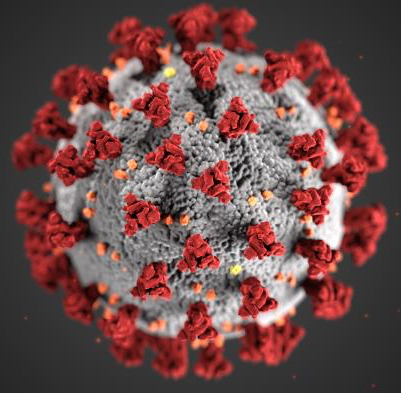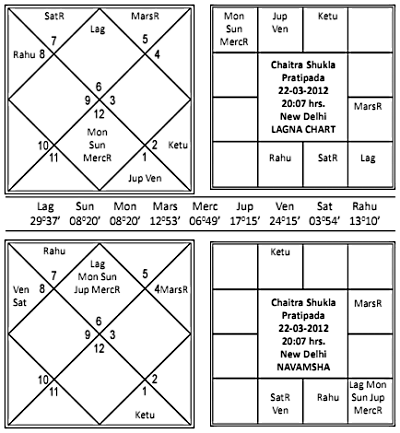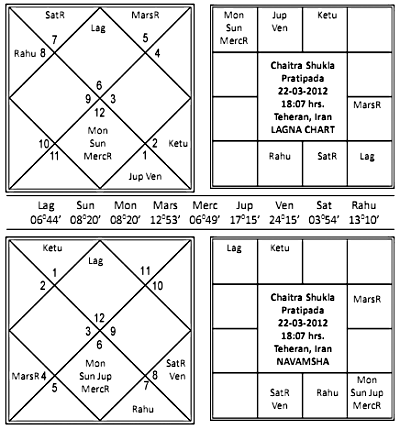|
||
|
||
|

 Is COVID-19 a biological war waged by China against its known and unknown enemies! This question has been hovering in the minds of so many of us. Generally, everyone believes this biological war of COVID-19, originated from Wuhan in China only. China has always been denying any part in it, “corona did not originate from their country”, has been their take. As for whether the virus is natural or man- made, we have no concrete information. A quote citing Japan’s Nobel Prize winning immunologist Tasuku Honjo saying that the virus is not natural, has been doing the rounds on social media, like whatsapp. The message says that the doctor had worked with a lab in China. But, Honjo refuted these claims; rather said that misinformation during Covid-19 pandemic can be seriously distracting. read more...
Is COVID-19 a biological war waged by China against its known and unknown enemies! This question has been hovering in the minds of so many of us. Generally, everyone believes this biological war of COVID-19, originated from Wuhan in China only. China has always been denying any part in it, “corona did not originate from their country”, has been their take. As for whether the virus is natural or man- made, we have no concrete information. A quote citing Japan’s Nobel Prize winning immunologist Tasuku Honjo saying that the virus is not natural, has been doing the rounds on social media, like whatsapp. The message says that the doctor had worked with a lab in China. But, Honjo refuted these claims; rather said that misinformation during Covid-19 pandemic can be seriously distracting. read more...
India Divided
The chaitra shukla pratipada horoscope of 22nd March, 2012, for the region (Agra to Iraq) has Virgo ascendant from Agra to Far East, the ascendant is Libra. This division of India clearly points to the danger in the west (Agra to Iraq) as the Virgo ascendant is under paapkartari by Mars and Saturn. In addition, the Virgo ascendant lord, Mercury is weakened by its debilitation in the 7th house with near zero digbala. This is a cause for concern. In comparison the Libra lagna horoscope for region beyond Agra towards the east is better.

The Boiling Scenario
Iran dangerously squeezed by Mars and Saturn? Astrologically this can be clearly seen in the foundation horoscope of Iran of 1st of February 1979 at 10:57, Teheran with Aries ascendant. The chaitra shukla pratipada horoscope for Teheran at 18:07 hrs. with Virgo ascendant and Pisces navamsha makes it clear. This navamsha has Moon, Sun, Mercury and Jupiter in the seventh house and Rahu in the eighth house aspected by debilitated Mars from the fifth house. This emphatically points to the danger that lurks. The concentration of four planets in the seventh house of war and foreign countries gives dangerous signals. The question is whether it is only Iran or the the adjoining countries also gets cleared on the basis of the navamsha.
 Iran clearly is at the center of the danger zone. Iran has faced waves of international sanctions since the Islamic revolution that brought the present set-up in February, 1979. The Aries lagna adopted by Mr.K.N.Rao seems more likely in view of an aggressive stance chosen by Iran. The common chaitra shukla pratipada horoscope for India, Pakistan, Afghanistan, Iran and Iraq surely finds the region vulnerably squeezed by Mars and Saturn.
Iran clearly is at the center of the danger zone. Iran has faced waves of international sanctions since the Islamic revolution that brought the present set-up in February, 1979. The Aries lagna adopted by Mr.K.N.Rao seems more likely in view of an aggressive stance chosen by Iran. The common chaitra shukla pratipada horoscope for India, Pakistan, Afghanistan, Iran and Iraq surely finds the region vulnerably squeezed by Mars and Saturn.
In 2010, Iran alarmed the West by starting to enrich uranium to a fissile purity of 20 percent for the stated purpose of conversion into special fuel for the Tehran reactor. Reportedly, in boosting enrichment up from the 3.5 percent level suitable for powering civilian nuclear plants, Iran moved significantly closer to the 90 percent threshold suitable for the fissile core of a nuclear warhead.
In 2011, it was reported that Iran installed two models for large scale testing at a research site. Iran eventually succeeded in introducing modern centrifuges for production, it could significantly shorten the time needed to stockpile enriched uranium, which can generate electricity or, if refined much more, nuclear explosions. It has also been reported that Iran has worked for several years to perfect faster, more reliable centrifuge machines than the 1970s-vintage P-1 model it now uses to refine uranium.
In a display of its nuclear strength, recently it inaugurated a project for producing 20 percent enriched uranium and 20 percent fuel plate. It also loaded domestically made nuclear fuel rods into its Tehran Research Reactor for the first time to keep it running.
Analysts say the fuel rod development itself will not put Iran any closer to producing nuclear weapons, but could be a way of telling Iran's adversaries that time is running out if they want to find a negotiated solution to the dispute. The United States and Israel have not ruled out military action if diplomacy and sanctions are ultimately judged futile in reining in Iran’s nuclear activity. The western fear is an unreined weaponising in any of the hostile countries is likely to wipe out Israel from the world map. The US cannot let down Israel.
Iran has threatened retaliation for any attack or effective ban on its oil exports, suggesting it could seal off the main Gulf export shipping channel, the Strait of Hormuz, used by a third of the world's crude oil tankers.
Iranian officials have refused to negotiate curbs on the programme, saying it aims solely to produce electricity for booming domestic demand in OPEC's No. 2 oil- exporting state.
The European Union further enraged Iran in January, 2012 when it decided to impose a boycott on its oil from July 1. Iran, the world's f ifth-largest oil exporter, responded by threatening to close the Strait of Hormuz, the main Gulf oil shipping lane.
Defiant Iran:Iranian naval ships docked at the Syrian port of Tartous , Iran's state-run Press TV reported. The ships were said to be providing training for Syrian naval forces under an agreement signed a year ago. Iranian defence minister Ahmad Vahidi, quoted by the semi-official Fars news agency, said: “Our ships passed through the Suez canal and it is Iran's right to have a presence in international waters.”
The talks between world powers and Iran failed in January 2011 because of Iran's unwillingness to discuss transparent limits on enrichment, as demanded by several U.N. Security Council resolutions passed since 2006.
SYRIA - Another boiling pot
Assad has ruled Syria for 11 years after succeeding his father Hafez on his death. The Assad family belongs to the Alawite sect, an offshoot of Shi’ite Islam, in a majority Sunni country,and there are fears the uprisingcould break down into a full sectarian conflict China accused Western countries of stirring civil war in Syria and two Iranian warships docked at a Syrian naval base, underscoring rising international tensions over the near year-long crisis.
Despite pursuing a sustained military crackdown on the opposition in cities across the country, President Bashar al-Assad forged ahead with plans to hold a referendum. Security forces have killed at least 5,000 people, according to human rights groups, in a campaign to crush the revolt while the Assad government says it has lost more than 2,000 soldiers and security agents in what it describes as a struggle against foreign-backed terrorists.
The conflict has also pitted Western and Gulf-led Arab powers against Assad allies Russia, China and Iran. The former have condemned Assad for the bloodshed and called for him to step down. Beijing and Moscow say all sides are to blame for the violence and the crisis should be resolved through talks, not foreign intervention.
China's Communist Party mouthpiece the People's Daily, said: “If Western countries continue to fully support Syria's opposition, then in the end a large-scale civil war will erupt and there will be no way to thus avoid the possibility of foreign armed intervention”.
A Chinese envoy met Assad in Damascus recently and backed his plan to hold a referendum on a new constitution which would lead to multi-party parliamentary elections within 90 days.
Syria's off icial SANA news agency said about 14,600,000 people throughout the country were eligible to take part in the referendum. The West and Syrian opposition figures have dismissed the plan as joke, saying it is impossible to have a valid election amid the continuing repression.
In Washington the senior US military officer, General Martin Dempsey, said intervening in Syria would be “very difficult” because it was not like Libya.
The West has ruled out any Libya-style military intervention but the Arab League, led by Saudi Arabia, has indicated some of its member states were prepared to arm the opposition. Syria’s army is very capable, with a sophisticated, integrated air defence system and chemical and biological weapons, Dempsey said. It was also not clear who or what the fragmented opposition was exactly, he said.
With Shi’te-led Iran already at odds with the United States, Europe and Israel over its nuclear programme, the deployment was likely to add to Western concerns that the Syria crisis could boil over into a regional conflict if it not resolved soon.
Israeli Deputy Prime Minister Dan Meridor, asked about the Iranian move at briefing in Jerusalem, said Assad was supported by Iran and the Hizbollah militant group and that Russia and China had given him “a licence to kill”.
“Iran invests a lot in trying to save the Syrian regime, by advising them, by supplying equipment, by sending people and maybe by also sending these ships through the Suez Canal”, he said
Australian foreign minister Kevin Rudd, speaking in Los Cabos, said the group aims “to place maximum pressure on president Assad to go, to end the butchery that we see day by day unfolding in Syria and to make sure we have a durable and peaceful political transition”.
India- Iran relations
In a long relationship of trust, Iran surely is looking for India's support in its hour of crisis. Iran holds in plenty what India needs most- oil. India has long term arrangement with Iran for oil. Any disturbance can create an unmanageable situation with respect to controlling inflation. Many ongoing projects are at stake. India is making a concerted push into Central Asia by taking charge of a crucial transportation network through Iran into the region and beyond, after getting an enthusiastic response from 14 stakeholder countries in the region in January this year. The project envisages a multi-modal transportation network that connects ports on India's west coast to Bandar Abbas in Iran, then overland to Bandar Anzali port on the Caspian Sea; thence through Rasht and Astara on the Azerbaijan border onwards to Kazakhstan, and further onwards towards Russia. Once complete, this would connect Europe and Asia in a unique way -- experts estimate the distance could be covered in 25-30 days in what currently takes 45-60 days through the Suez Canal.
Reportedly India has told Iran that India would take charge of the project, including building the missing sections of the railway and road link in Iran. Thanks to US sanctions on Iran’s oil sector, India is finding it difficult to pay for its oil imports with hard currency. One of the best ways of paying for Iranian oil is through infrastructure projects like the corridor, which serves economic and strategic interests of all states concerned.
This has been a win-win proposition for India since the North-South Corridor agreement was signed between India, Iran and Russia in September, 2000. But over the years, the project fell into disuse. Iran made little attempt to complete construction on its side, expending little political or administrative energy. Neither did Russia or India, which preferred to talk about it but did little to push it.
Meanwhile, 11 other countries, including all the Central Asian states, joined up.
Several recent developments have changed India's timid approach. F irst, China has been building an extensive road and railway network through Central Asia, aiming to touch Europe. It’s fast, efficient and already on the ground. While this has made Central Asia accessible to China and others, it is worrying these countries no end.
Over the past few years, Central Asian states have repeatedly approached India to play the balancing role. Nursultan Nazarbayev of Kazakhstan actually gave an oil block, Satpaev, to India on strategic considerations.
Second, with Pakistan in a state of almost chronic instability, India can never hope to access Central Asia through Pakistan. Its best bet remains Iran. While India will have to reduce oil imports from Iran, building a big- ticket infrastructure corridor is a reaffirmation of its commitment to the relationship.
The North-South Corridor, which can be described as part of the “new great game”, is now a battle for "power, hegemony, profits and resources", as a senior official put it. Quite apart from opening up new markets for India, the corridor could also be used to transport energy resources to India -- from oil, gas to uranium and other industrial metals.
Simultaneously, India is eyeing two other transit and transportation networks from Central Asia -- all of them going through Iran. One is a Kazakhstan-Turkmenistan Corridor - a 677-km railway line connecting these countries with Iran and the Persian Gulf. It will link Uzen in Kazakhstan with Gyzylgaya-Bereket-Etrek in Turkmenistan and end at Gorgan in Iran's Golestan province. The second comes in from Uzbekistan through northern Afghanistan, known as the Northern Distribution Network through which the US and NATO currently route 70% of their supplies for the ISAF forces. But after the US and NATO exit Afghanistan in 2014, India plans to extend this route to link up with the Zaranj- Delaram road that enters Iran.
India has been pushing Iran to complete construction of the Chahbahar port, which is crucial for these corridors to work to India's advantage. Iran has been notoriously slow in taking these up but India expects that in its current isolation, Iran will move fast.
Pakistan is shaky with shakier Balochistan: Western powers would like to pitch a tent here for the area has a border with Iran. These developments are important to us as the impact is not going to be on the newspapers and TV
channels alone. A war can uproot us from our homes and a sharp increase in oil prices can demolish our budgets.
|
1. APPRAISAL OF MUNDANE PREDICTIONS - 2 (840554)
|
|
2. SUCCESS AND 11TH HOUSE - 1 (301363)
|
|
3. PREDICITING SECOND MARRIAGE (271063)
|
|
4. NO NEWS CAN BE GOOD NEWS (236364)
|
|
5. WILL SATURN SCORE A HATTRICK IN OCTOBER 2007 ? (209626)
|
|
6. AN INSIGHT INTO DREAMS (209170)
|
|
7. BENAZIR BHUTTO: A TRAGIC PREDICTION COMES TRUE (202694)
|
|
8. SHE OR HE ? HILLARY OR OBAMA ? (Revised) (194322)
|
|
9. DREADFUL YEAR 2007 (193522)
|
|
10. THE CASE OF SANJAY DUTT AND PUNISHMENT (186977)
|



